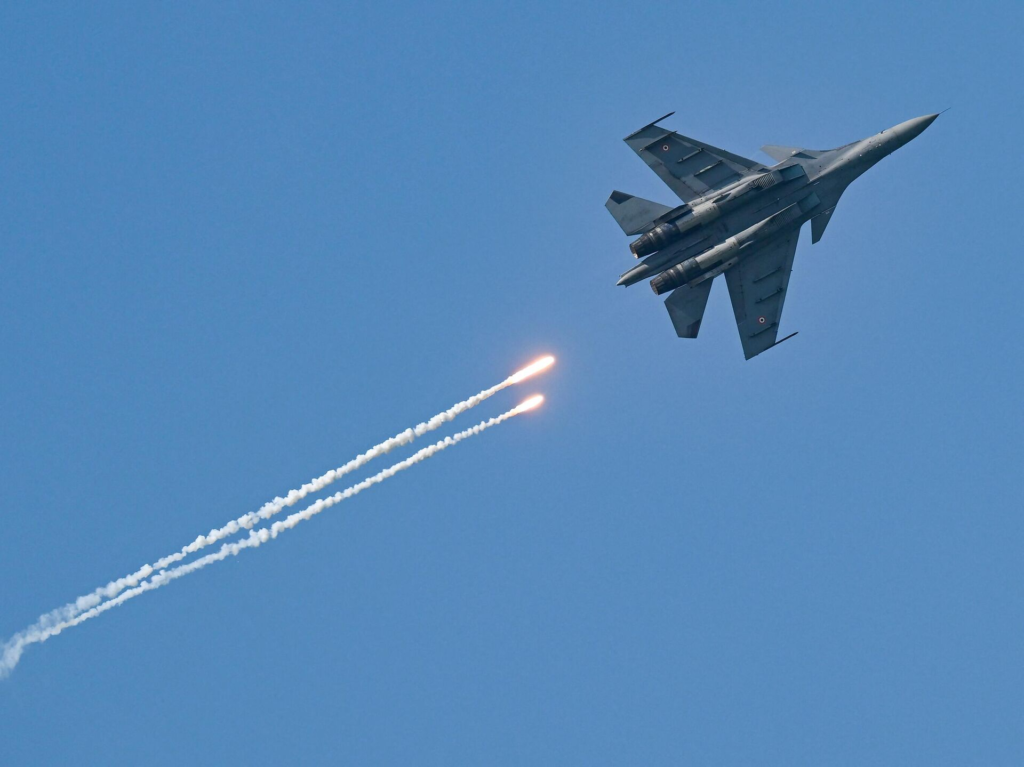By Amanjot Singh
India’s Su-30MKI fleet over 260 fighters remains the backbone of the Indian Air Force (IAF). But the aircraft’s imported AL-31F engines are fast becoming a liability. Performance shortfalls, poor fuel efficiency, and costly overhaul cycles have made them one of the weakest links in India’s combat aviation ecosystem.
Russia has offered two solutions: the AL-41F1S (AL-41), already in service with the Su-35, and the more advanced 177S, a next-generation derivative. Both represent significant steps up from the AL-31, but each carries very different strategic implications for India.
The Legacy Engine: AL-31F
The AL-31FP powering the Su-30MKI is derived from the 1980s AL-31F baseline.
• Dry thrust: ~7,600–7,800 kgf
• Afterburner thrust: ~12,500–12,800 kgf
• Specific fuel consumption (SFC): ~0.78 cruise, ~2.0 afterburner
• Service life: ~2,500 hours
• MTBO: ~1,000 hours
When first inducted, it was cutting-edge. But by today’s standards, the AL-31 suffers from low efficiency, high maintenance costs, and limited service life, making it unsuitable for sustaining India’s frontline force into the 2030s.
The Bridge Upgrade: AL-41F1S
The AL-41F1S, also known as the 117S, is already integrated into the Su-35 and Su-30SM2. It offers immediate, proven improvements with moderate integration effort.
• Dry thrust: ~8,800–8,900 kgf
• Afterburner thrust: ~14,500 kgf
• SFC: ~0.67 cruise, ~1.9 afterburner
• Service life: ~4,000 hours
• MTBO: ~1,000 hours
For India, the AL-41 is a low-risk, short-term fix. It doubles service life, improves thrust, and cuts fuel burn. Most importantly, it’s a plug-in replacement derived from the AL-31 family, reducing redesign costs.
The Leap Forward: 177S
The 177S represents a deeper generational jump, borrowing technology from the AL-51 (Izdeliye 30) engine of the Su-57 while remaining in the AL-31/41 category.
• Dry thrust: ~9,500–9,800 kgf
• Afterburner thrust: ~15,000–15,200 kgf
• SFC: ~0.63–0.65 cruise, ~1.85 afterburner
• Service life: ~6,000 hours
• MTBO: ~1,200–1,500 hours
Compared to AL-41, the 177S brings longer life, higher efficiency, and more thrust, giving Su-30MKIs better endurance, payload capacity, and high-altitude performance against China and Pakistan.
Why Russia Didn’t Adopt AL-177S
Unlike the AL-41, the 177S will be never widely adopted by the Russian Air Force. The reasons are revealing:
- Funding Leverage – Moscow prioritized the Su-57’s AL-51 and had no budget for mass-producing AL-177S. Instead, it looked for an export customer India being the prime candidate to bankroll the full-swing development and certification.
- Export-First Design – The AL-177S was packaged as a premium export product, offering foreign buyers next-gen performance without compromising Russia’s own fifth-gen roadmap.
- Domestic Focus on AL-41 – For Su-30SM upgrades, Russia opted for the AL-41F1S, already in series production, rather than opening a parallel supply line.
In essence, the 177S exists because Russia wants someone else to pay for it and India fits that bill.
India’s Strategic Choice: Short-Term Fix or Long-Term Leap?
- Short-Term – The AL-41F1S is battle-tested and quickly available. For an IAF struggling below 30 squadrons, it restores combat strength within this decade.
- Long-Term – The 177S offers a pathway to extended fleet life, efficiency, and performance into the 2040s. More importantly, it could open doors to technology transfer in advanced metallurgy, turbine cooling, and hot-section design areas India has struggled to access from the West.
Why This Matters
India’s indigenous jet programs, Tejas Mk2 and AMCA are still reliant on imported engines from GE. While AL-177S itself cannot be transplanted into these future aircraft, the know-how transfer could feed India’s domestic engine ecosystem and reduce long-term dependency.
India must adopt a dual-track approach:
1. Procure AL-41F1S now – to stabilize the Su-30MKI fleet with minimal risk.
2. Negotiate 177S technology transfer – even if induction is delayed, securing IP rights today would give India leverage for indigenous programs tomorrow.
The bottom line: AL-41 is a bridge. AL-177S is leverage. India needs both one for combat readiness today, and the other for propulsion independence tomorrow.
